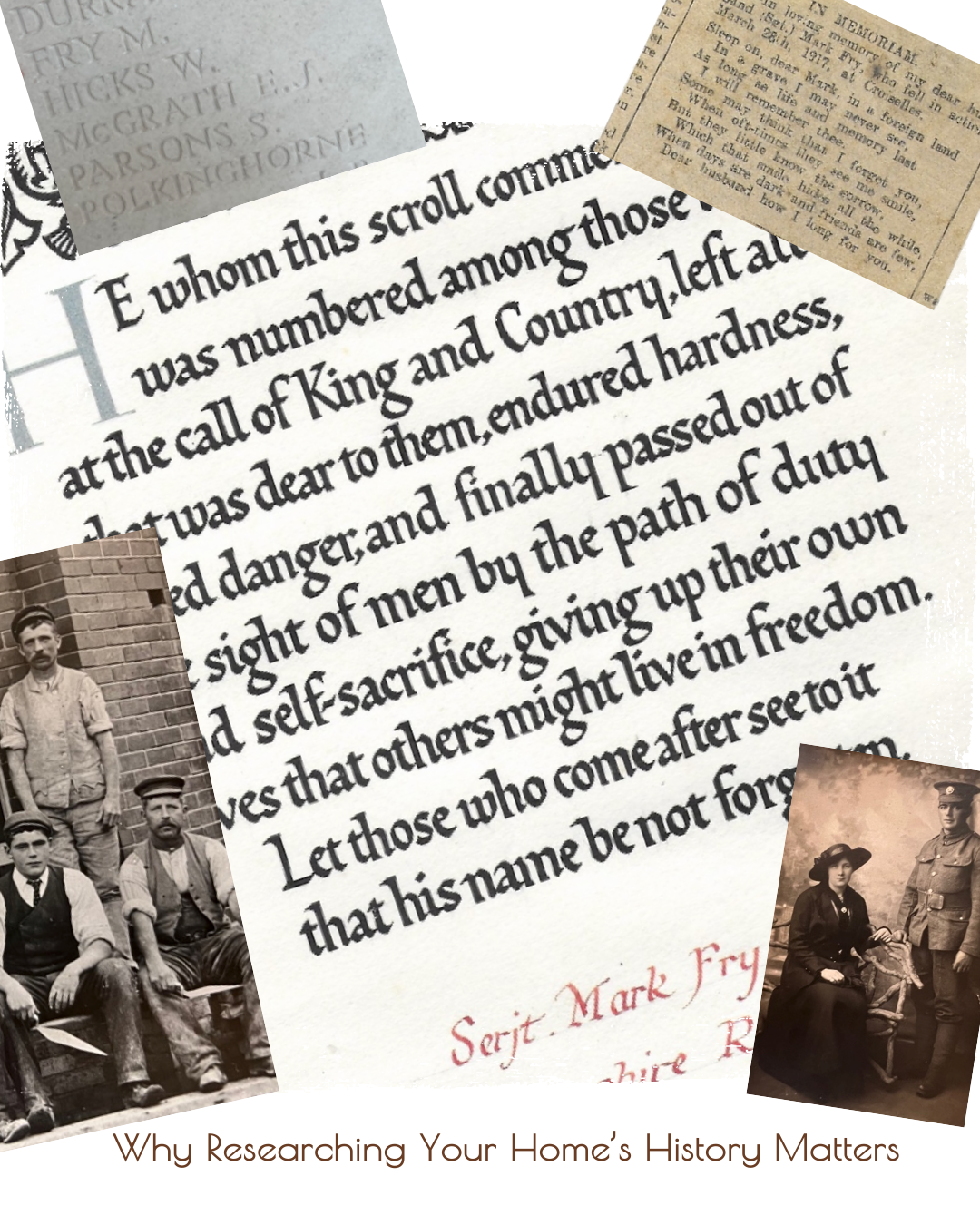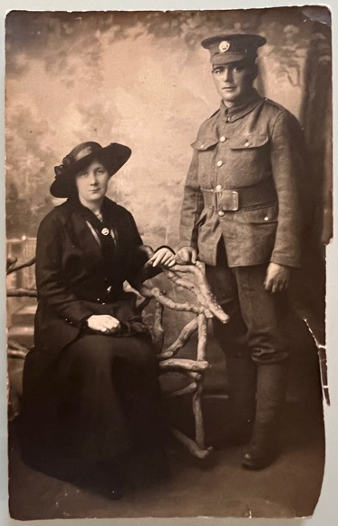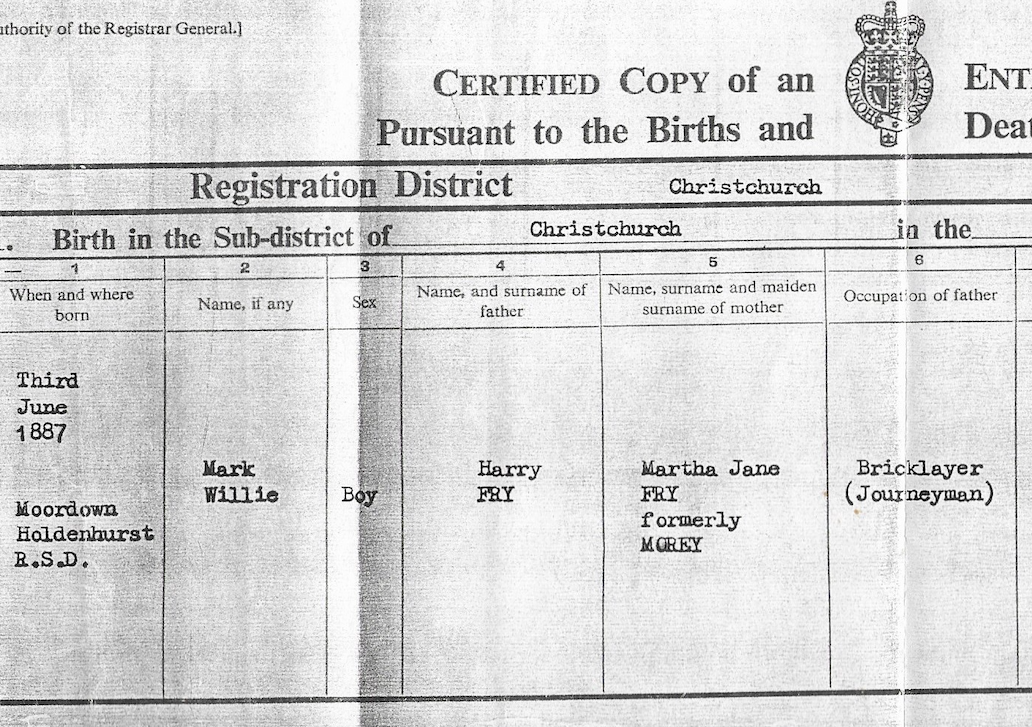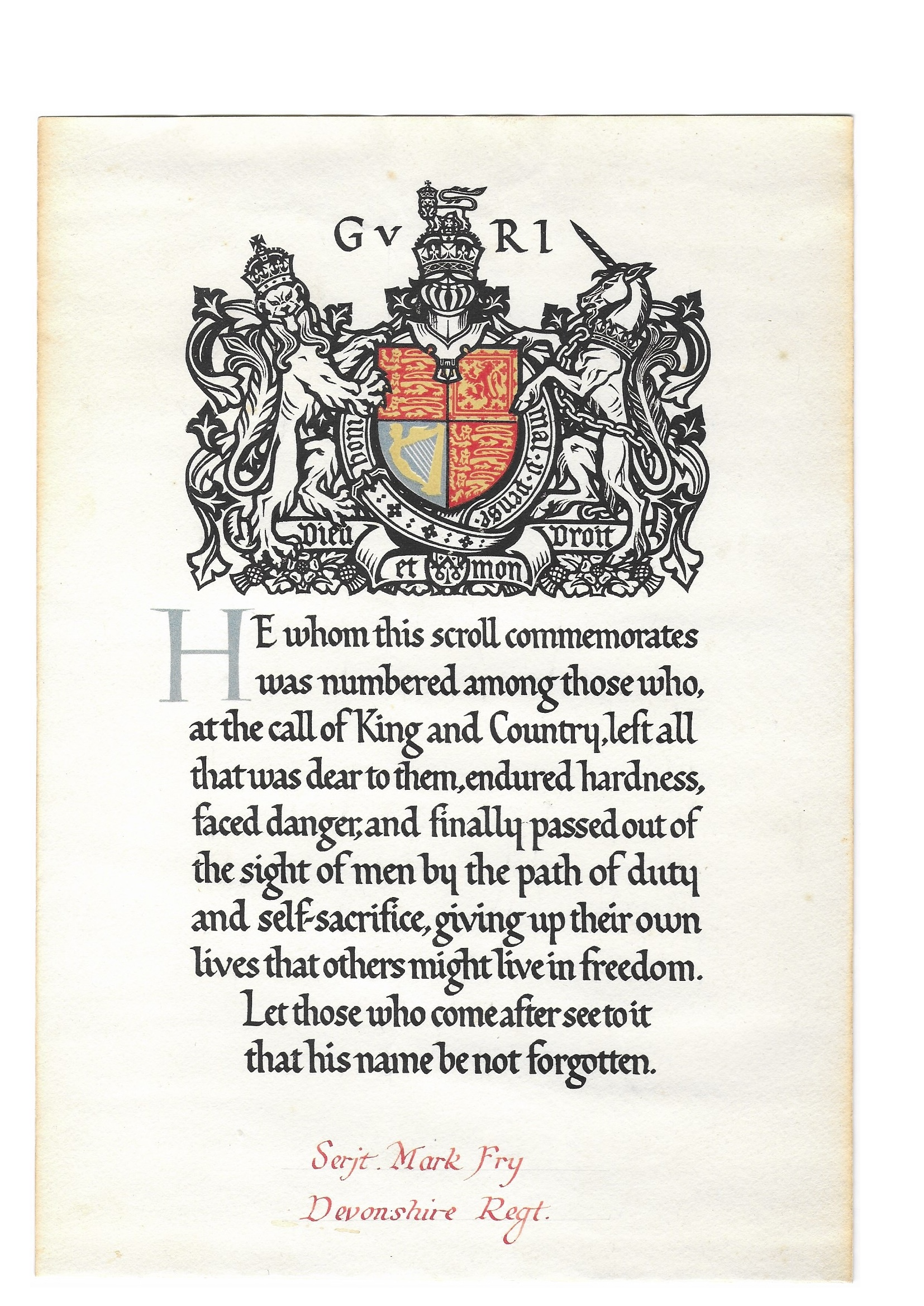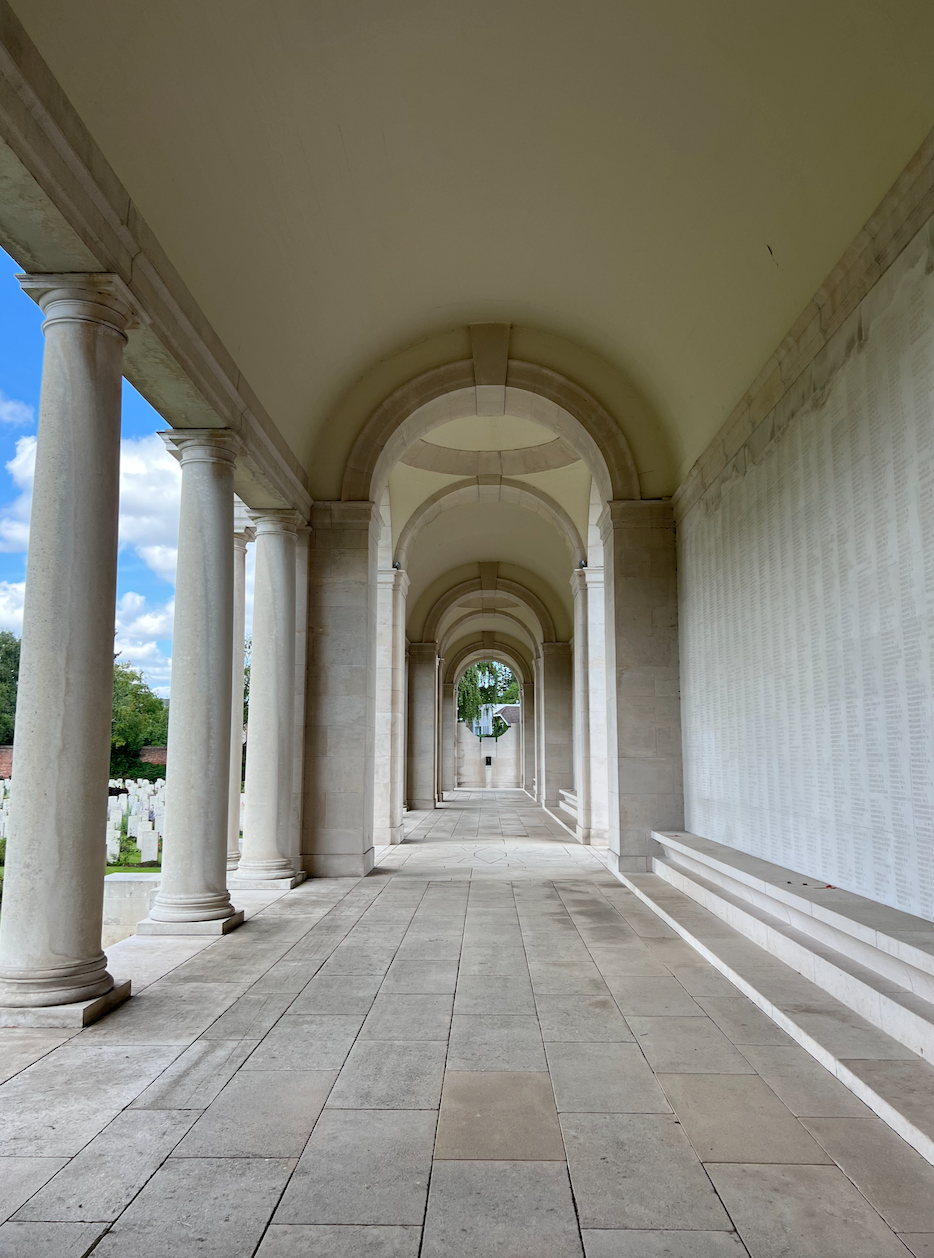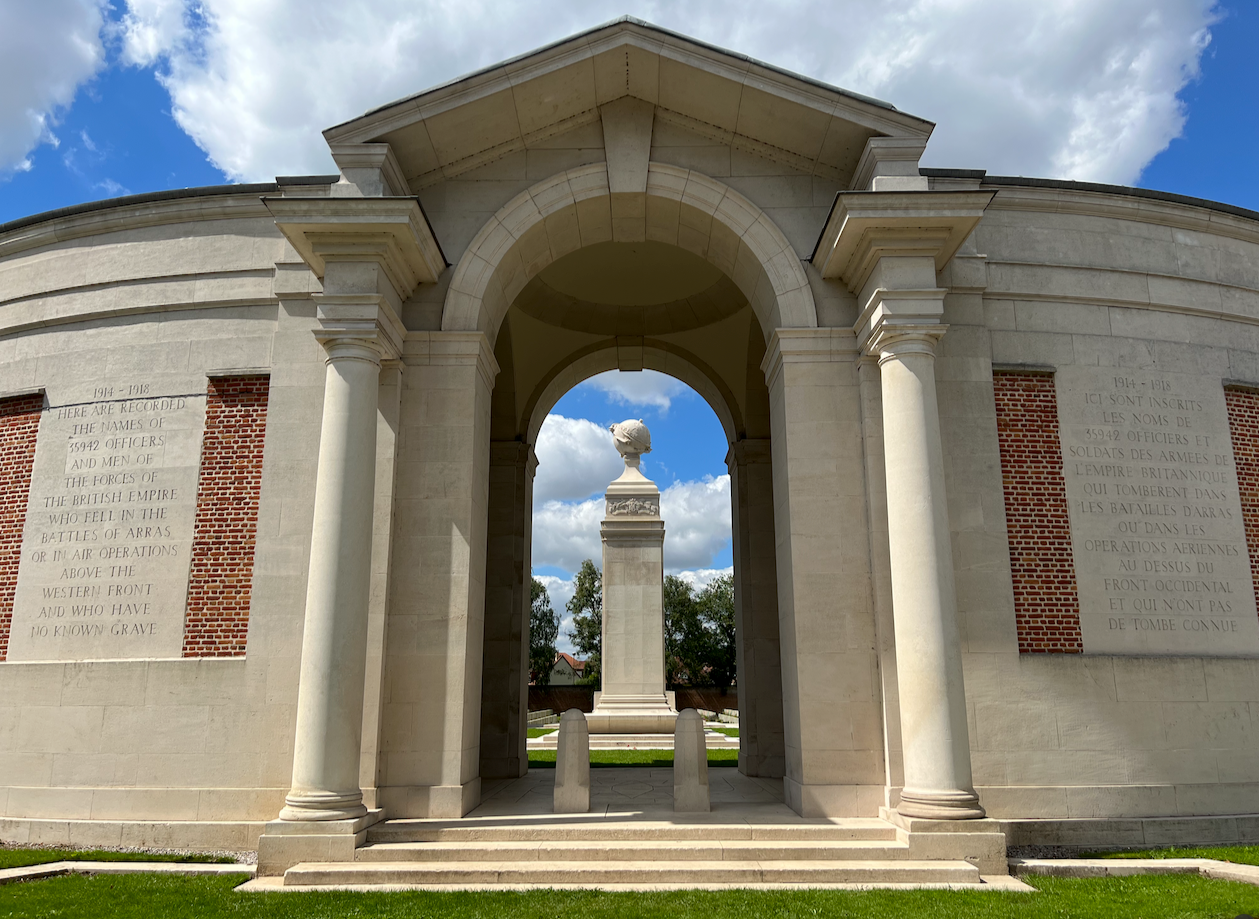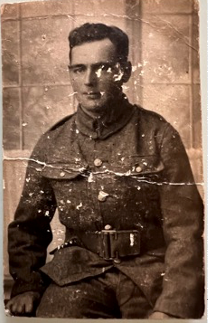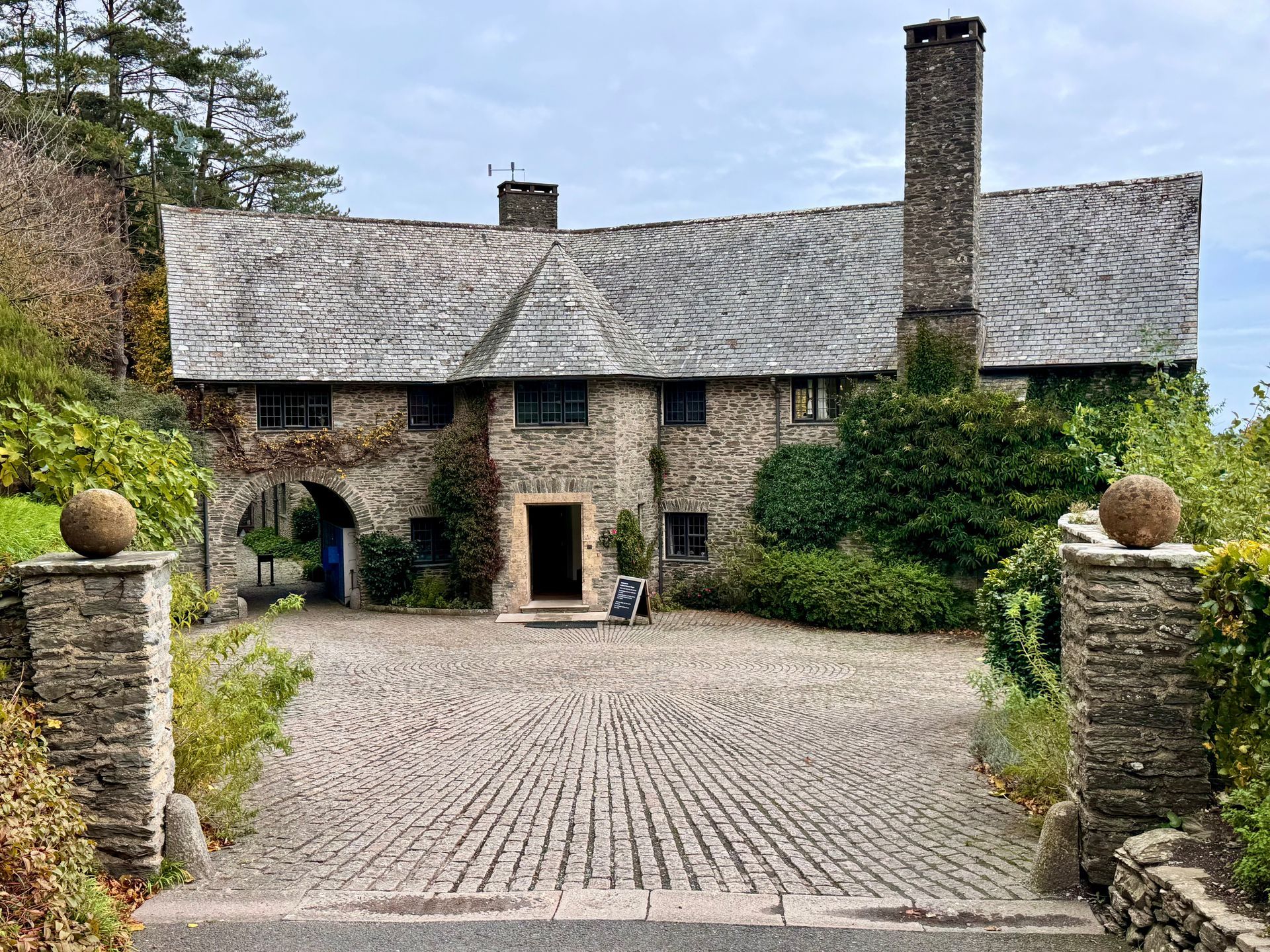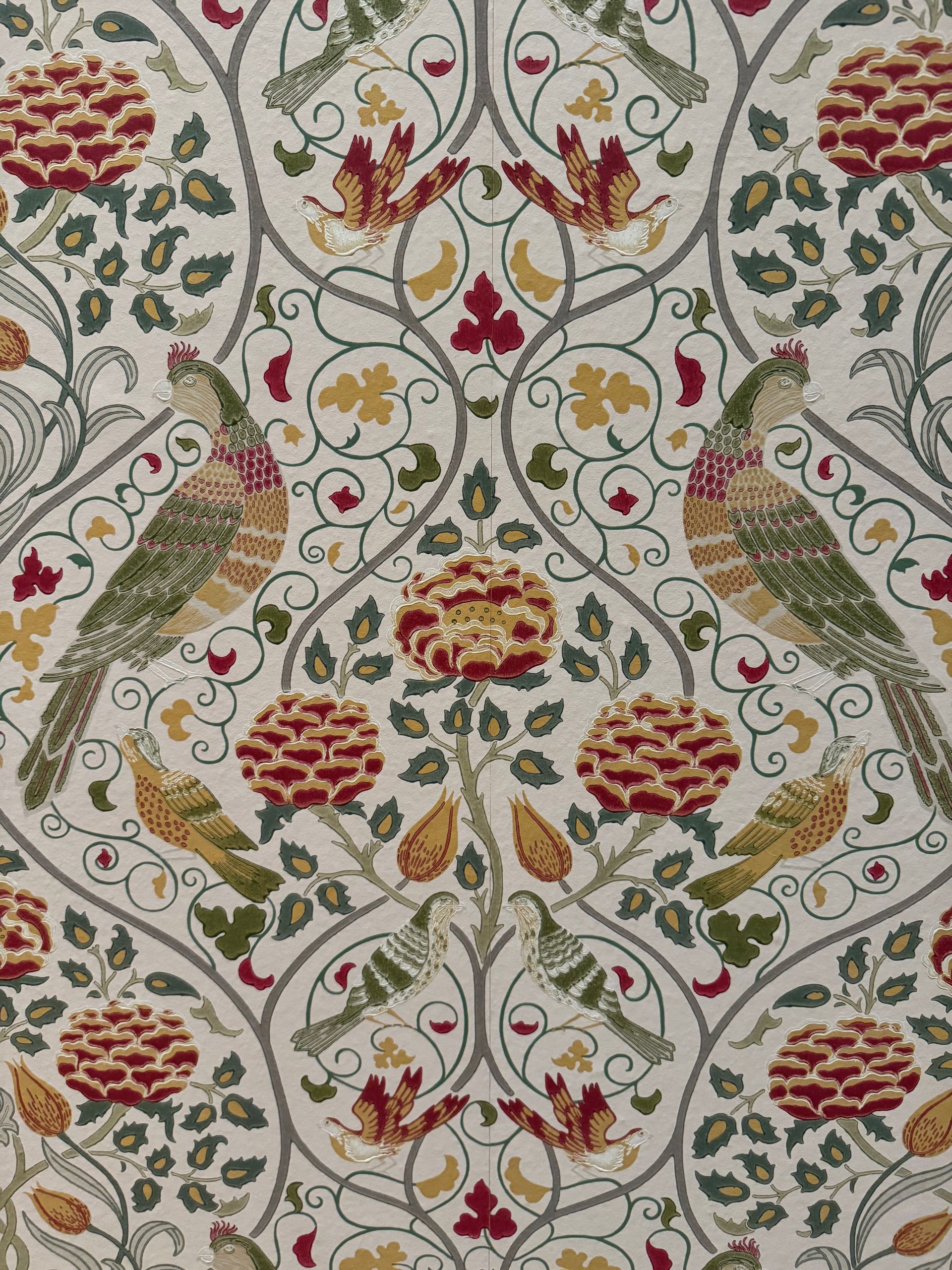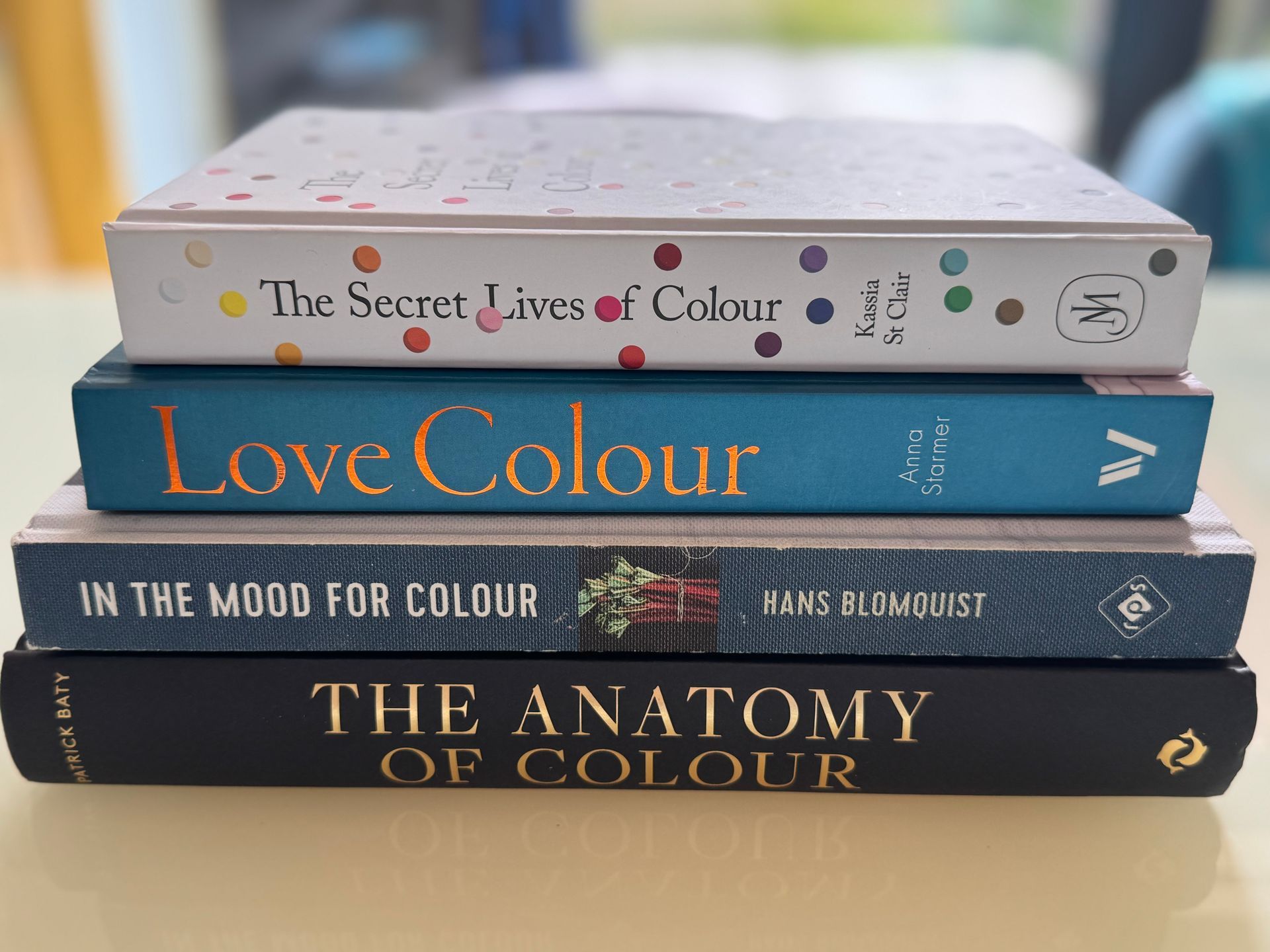Mark was just 29 when he died in France during WWI. Through tireless research of my family, we’ve been able to piece together his life—from census records and family memories to war diaries and battlefield reports. He was a bricklayer, a footballer for Southampton, a husband. And he was one of the many young men who left quiet, hardworking lives behind to serve, never to return.
A strange coincidence strengthened my link to Mark. A couple of years ago, I went to France, to the site of the battle. He was buried in an unmarked grave, but his name is on the Arras memorial. The memorial was designed by Sir Edwin Lutyens, one of my favourite Arts and Crafts architects - who grew up in the Surrey village I now live in.
Understanding Mark’s story—his role in the community, his craftsmanship, his sacrifice—has changed the way I view homes. They are not just bricks and mortar. They are repositories of memory, legacy and identity.
Although the depth of the research varies, when we work on a period property, we take the time to explore its past. It’s about more than heritage features or planning regulations. It’s about honouring those who came before. Who built the house? Who lived there? What was happening in the world around them?
For homeowners, this can be incredibly grounding. You’re not just making improvements—you’re continuing a legacy. When you understand your home’s past, you understand your place in a much bigger story. It fosters a sense of belonging, of stewardship and of pride.
Our homes connect us—to each other, to our communities, and to the generations who shaped the spaces we now call our own. That’s why design, for us, always starts with history, even in the most modern schemes and extensions.
If you’re looking to find connection with your home, whether you’re renovating or not, drop us a line to find out about our research packages.


